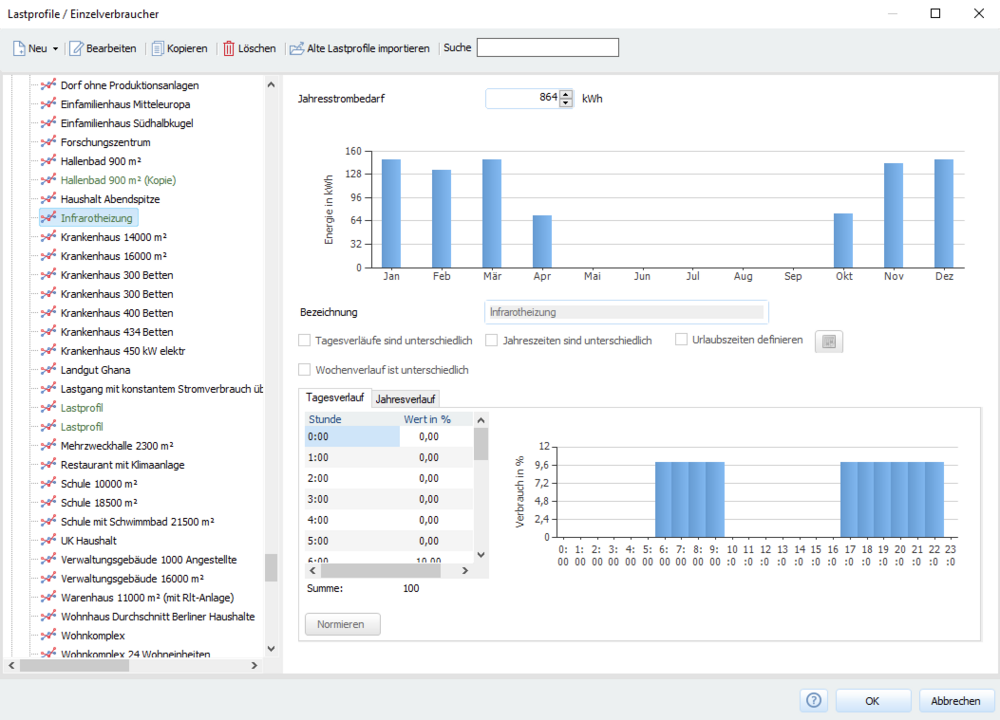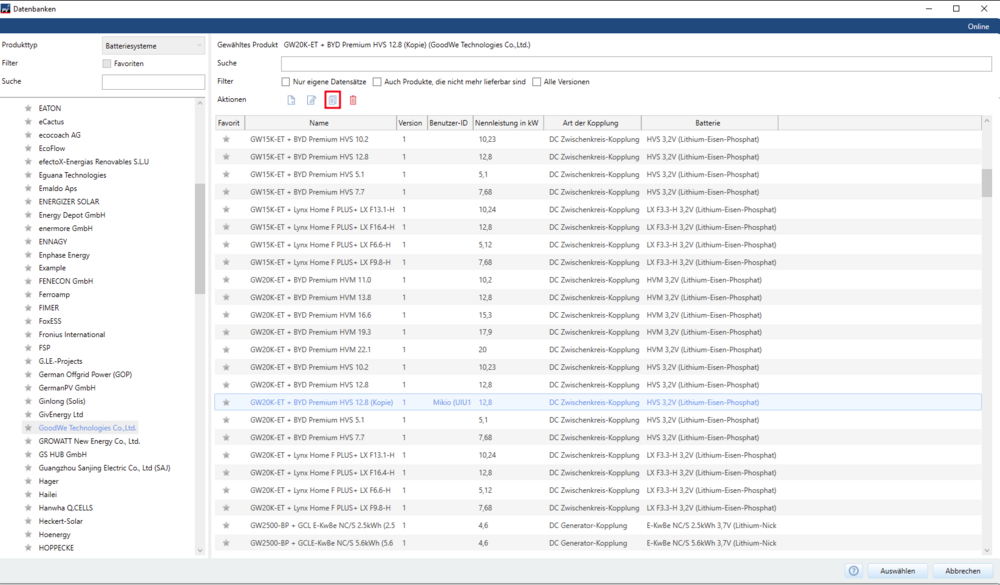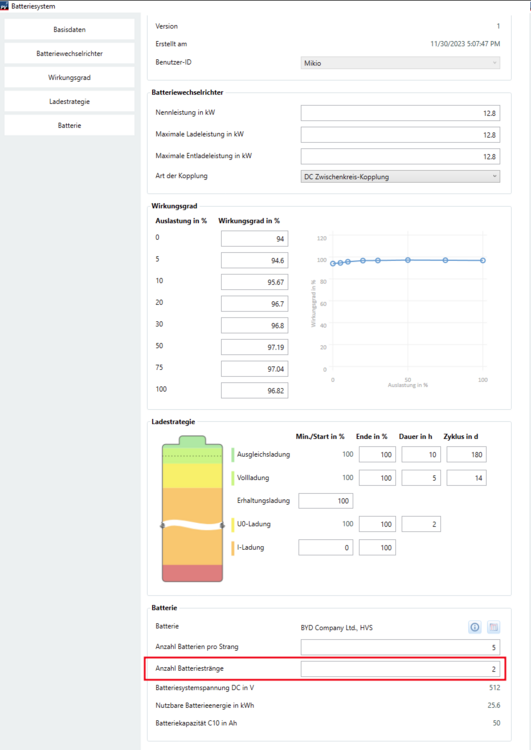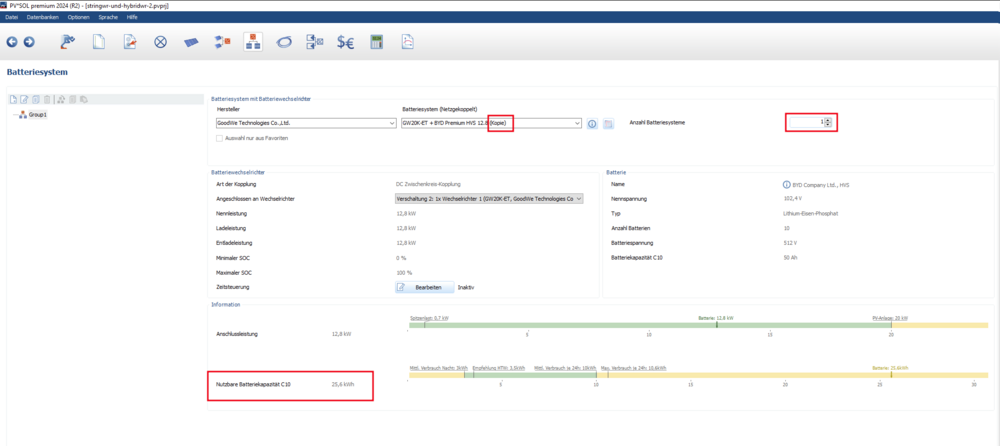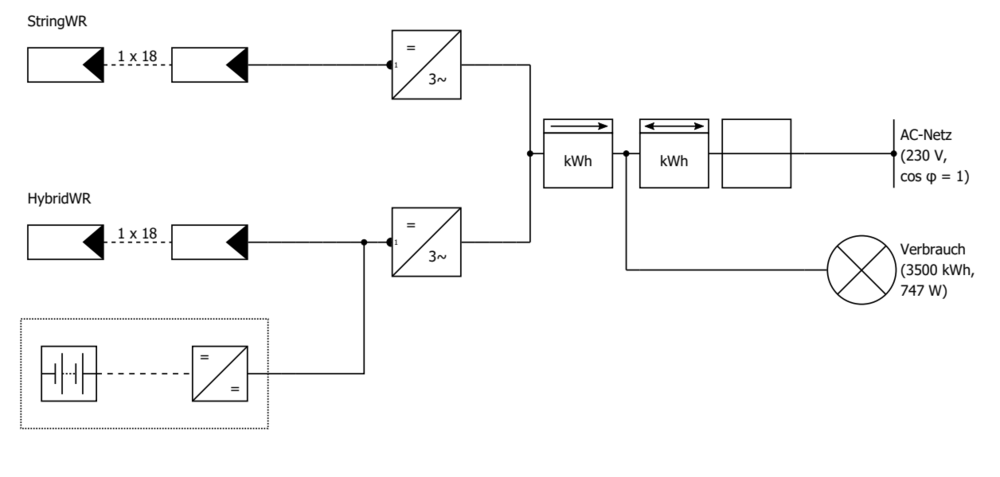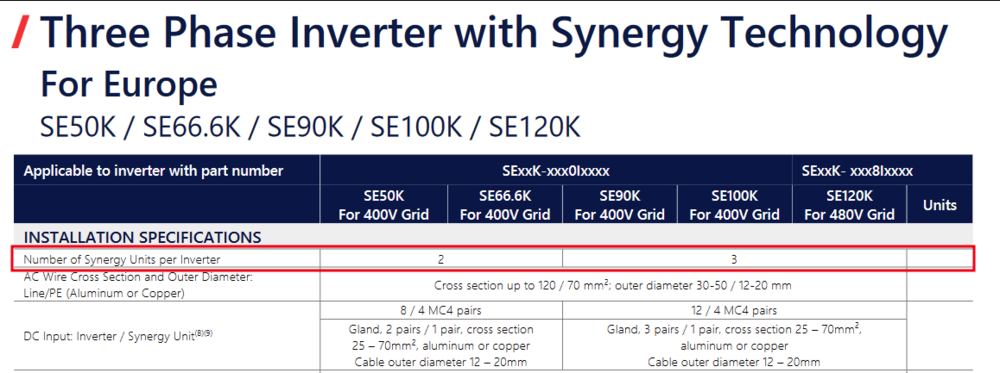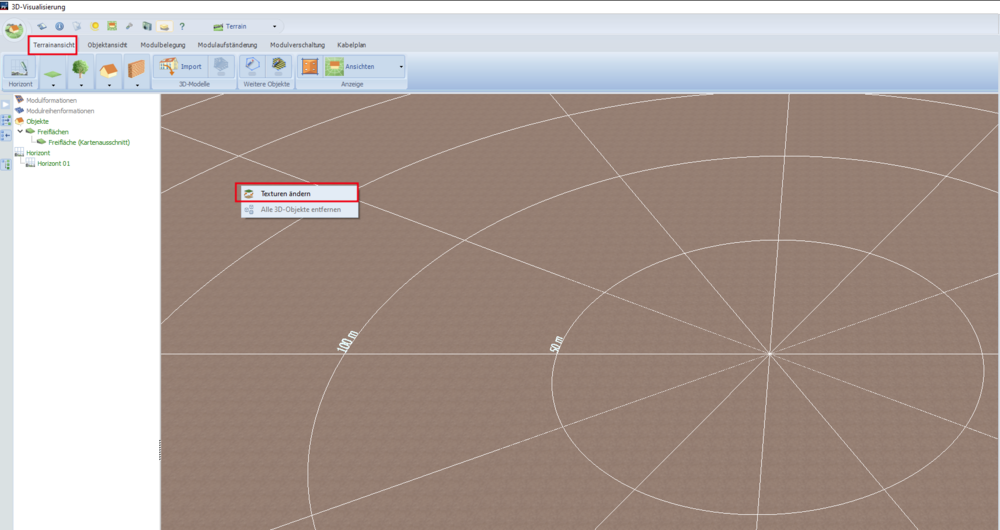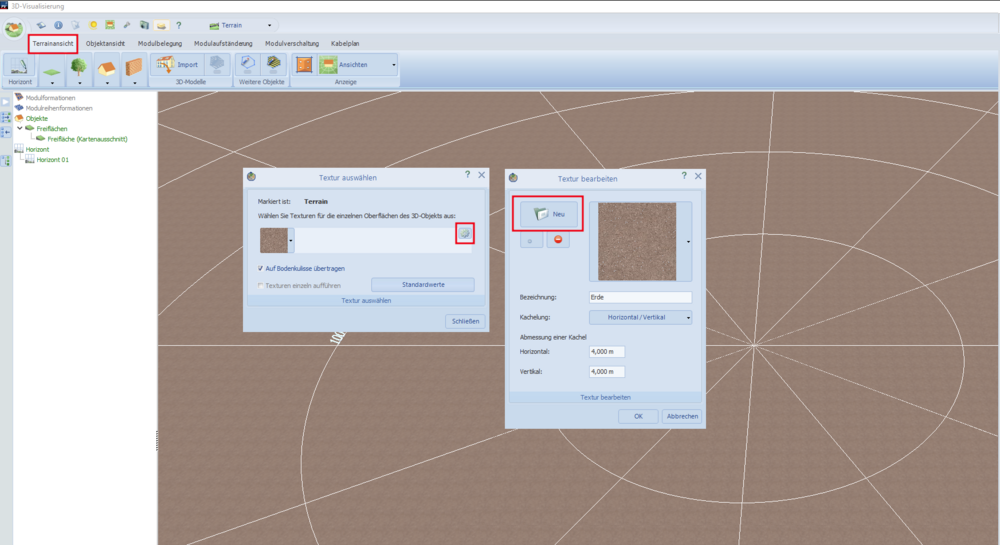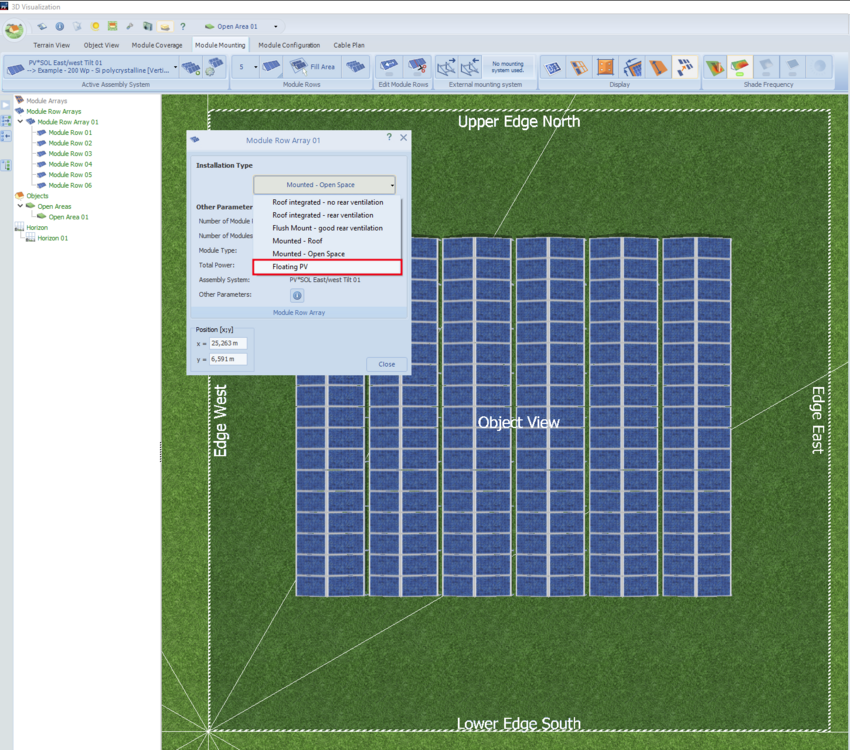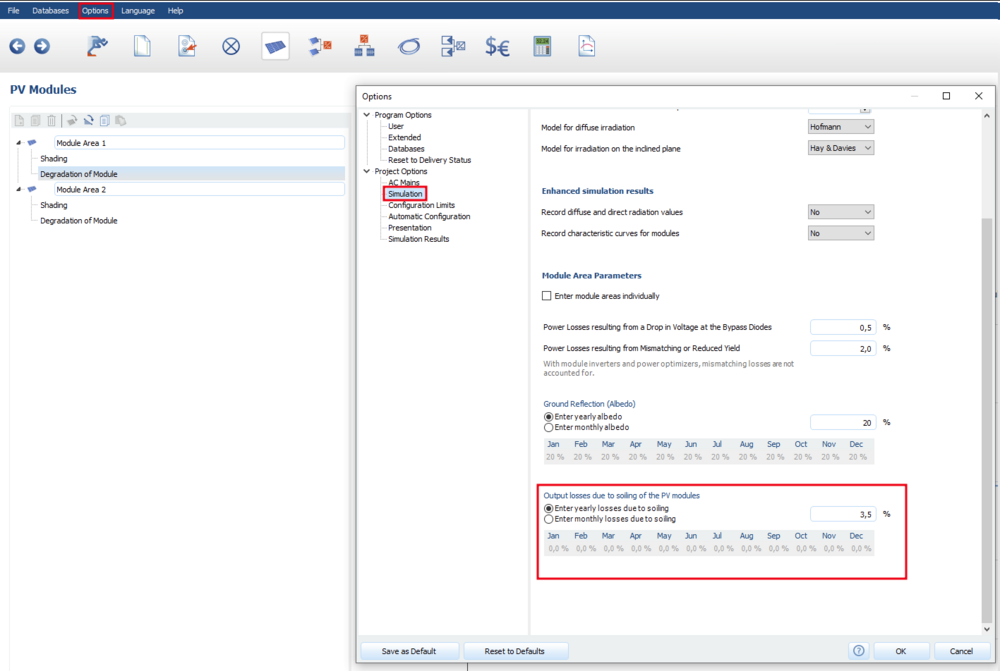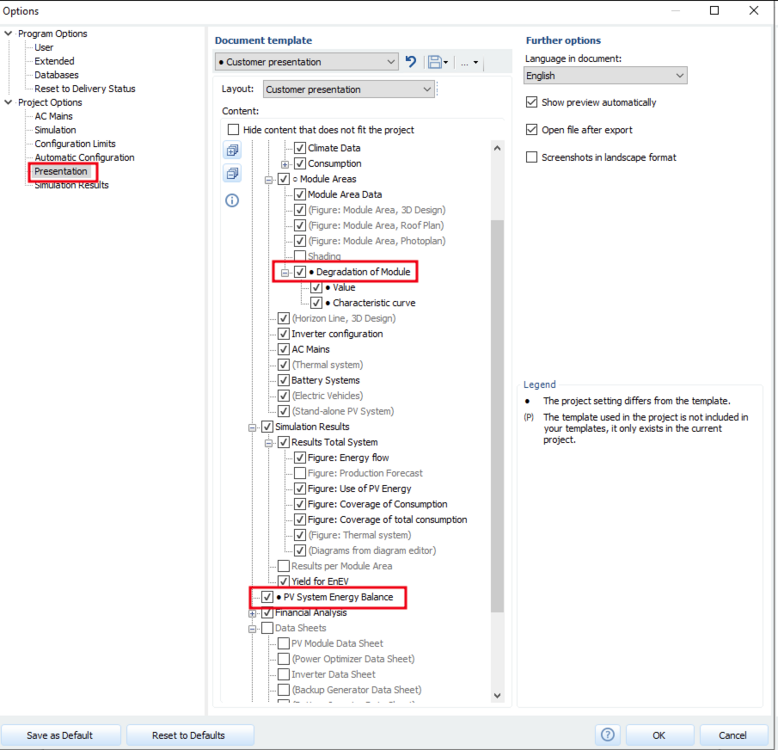-
Posts
261 -
Joined
-
Last visited
-
Days Won
12
Everything posted by developer_mo
-
Hi flex, thank you for the request. I forwarded it to our database team. Kind regards Mikio
-
Hallo Björn, vielen Dank für die Anfrage. Ein konkretes Lastprofil für eine Infrarotheizung kann ich leider nicht anbieten. Eine Möglichkeit um den Verbrauch grob zu simulieren, wäre das Anlegen eines Lastprofils aus geschätzten Tagesverläufen. Bei einer 600 Watt Infrarotheizung, die im Winter täglich 8 Stunden läuft, wäre der Monatsverbrauch ca. 144 kWh (600 W * 8h *30 Tage). Dieser Monatswert könnte für die Wintermonate, und für die Übergangsmonate beispielsweise die Hälfte des Wertes eingegeben werden. Für das Beispiel wären das dann ein Jahresverbrauch von 864 kWh (144* (1/2+5+1/2)) der als aufzuteilender Verbrauch eingegeben werden kann. Eine Anleitung zum Anlegen eines Lastprofils aus Tagesverläufen findest du hier: https://help.valentin-software.com/pvsol/de/navigationsseiten/verbrauch/#lastprofile-aus-tagesverläufen Hilft das ein Stück weiter? Viele Grüße Mikio
-
Hallo Solarmacher, danke für die Präzisierung. Es tut mir leid, dass die erste Antwort noch nicht zum gewünschten Ergebnis geführt hat. Beide Batterien an einen Wechselrichter anzuschließen ist möglich, indem Sie eine Kopie des Batteriesystems anlegen und die "Anzahl Batteriestränge" von 1 auf 2 erhöhen. Hier noch die Schritte als Screenshots: Ich hoffe das hilft jetzt weiter. Viele Grüße Mikio
-
Hi Omer, thank you for the report. Today we released a 2024 R2 version of PV*SOL Premium that contains a fix for this Photo Plan issue. It should be resolved, if you update to this version. Kind regards Mikio
-
Hallo Solarmacher, verstehe ich es richtig, dass die beiden Batterietürme parallel verschaltet und an den Hybridwechselrichter angeschlossen werden sollen? Falls ja, könnten die beiden Batterietürme als ein Batteriesystem über eine DC Generator-Kopplung oder eine DC Zwischenkreis-Kopplung an den Hybridwechselrichter angeschlossen werden. Im Fall der DC Generator-Kopplung würde der Schaltplan schematisch so aussehen: Viele Grüße Mikio
-
Hallo kranty, vielen Dank für die Frage. Abschreibungen haben nichts mit der Mehrwertsteuer zu tun. Es sind Verluste, die das Einkommen oder den Gewinn und damit die zu zahlende Steuer verringern können. Die Auswahl "Abschreibungsfähige Investitionen" ist relevant, wenn PV*SOL die Steuereinsparung durch Abschreibungen berücksichtigen soll. Wenn keine Steuern berücksichtigt werden sollen, ist es egal, ob Sie Ihre Kosten in den „Abschreibungsfähige Investitionen“ oder in "Einmalige Zahlungen (nicht abschreibungsfähig)", aber in einem von beiden müssen sie eingetragen werden. Ich hoffe ich konnte damit die beiden unterschiedlichen Optionen erklären. Viele Grüße Mikio
-
Hi Amedeo, thank you for the question. Unfortunately it is not possible to build a off-grid system with a DC coupled battery in PV*SOL. Battery Chargers from Victron are not included in our database. However, if you can send us a sketch or a circuit diagram of your system, I can ask a colleague if there is an alternative way to implement it in PV*SOL. Kind regards Mikio
-
Hi hiten, unfortunately it is not possible to open files created with a newer version of PV*SOL (e.g. 2024) in a lower PV*SOL version (e.g. 2023). The main reason is that the newer version could contain file structures an older version can not handle. Kind regards Mikio
-
Hallo Anfänger, vielen Dank für die Frage. Eine Loggia oder eine andere Vertiefung im Dach, kann mit PV*SOL nicht direkt nachgebaut werden (außer durch den Import eines 3D Modells). Stattdessen kann aber eine Sperrfläche in entsprechender Größe angelegt werden, die dazu führt, dass diese Fläche nicht belegt werden kann. Für das Simulationsergebnis macht das keinen Unterschied, weil eine Vertiefung im Dach die Module nicht verschattet. Viele Grüße Mikio
- 1 reply
-
- 1
-

-
Hello Fatih DİLMAÇ, if there is an object or an restriction area next to the modules that would collide with a module after increasing the module spacing, this error occurs. It also occurs when the increasing of the module spacing would lead to an overhang over the roof surface. If both these cases do not apply, could you please send your project file to me via private message in this forum. Kind regards Mikio
-
Hi Paul, thank you for your post. With the program update to PV*SOL premium 2024 R1, we have also adapted the simulation and planning of SolarEdge Synergy inverters to reality. SolarEdge Synergy inverters consist of several inverter units that must be combined with each other. The number of units to be used can also be found in the inverter data sheet. The SE100K, for example, consists of three units (see screenshot). The individual units are stored in the PV*SOL database. When configuring, you must select the specified number of units as individual inverters. These then make up the whole inverter. In the case of building up a SE50K inverter you have to choose two "SE50K Unit - 25kW" units. After increasing the numbers of the "SE50K Unit - 25kW" from one to two, the sizing factor should be as in your previous project. Kind regards Mikio
- 6 replies
-
- units
- updated rules
-
(and 1 more)
Tagged with:
-
Hallo Sinä, das tut mir Leid, dass Sie das Projekt nicht bis zum gewünschten Stand wiederherstellen konnten. Das voreingestellte Autosaveintervall beträgt drei Minuten und es werden maximal zehn vergangene Stände gespeichert. Wenn unter diesen Ständen kein verwendbarer Stand mehr vorhanden ist, ist es leider nicht mehr möglich weiter zurückliegende Stände wiederherzustellen. Falls Sie das Autosaveintervall ändern möchten geht das in der 3D Umgebung über das Schraubenschlüssel Symbol in der oberen Symbolleiste und dann unter "Allgemein > Sicherungskopie all X min". Ich wünsche Ihnen trotzdem noch gutes Gelingen bei Ihrem Projekt. Viele Grüße Mikio
-
Hallo Sinä, leider gibt es keine Möglichkeit einen Kartenausschnitt nachträglich unter 3D Modelle einzufügen. Haben Sie schon versucht den letzten automatisch gespeicherten Stand des Projektes wiederherzustellen? Die Autosave Dateien befinden sich im Verzeichnis "C:\Useres\Username\Documents\Valentin EnergieSoftware\PVSOL premium 20XX\Autosave". Ja, das ist möglich. Wenn Sie sich auf der Terrainansicht befinden über einen Rechtsklick auf das Gras und dann auf "Textur ändern". Im erscheinenden Dialog können Sie entweder eine der angebotenen Texturen wählen oder über das Zahnradsymbol und "Neu" eine eigene Bilddatei als Textur importieren. Hilft Ihnen das weiter? Freundliche Grüße Mikio
-

Inverter Selection Issue - Current in A too high?
developer_mo replied to obikerui's topic in PV*SOL
Hello obikerui, thank you for taking the time for reporting this case to us. The current of 26 A is correct, but the maximum input current of the inverter was entered incorrectly in our database. It should be 32 A and not 16 A. Our database team has already corrected the value and it will be corrected with the next database update, which is expected to be released tomorrow. Kind regards Mikio -
Hi Ulvi Hikmah, thank you for your question. The difference between the "Module Coverage" and the "Module Mounting" section is, that the modules you place over "Module Coverage" can not be tilt up. For a tilt up floating PV-system please use the "Module Mounting" section to first place a tilt up system on your defined area. Then right click on the "Module Row Array" in the tree view and choose the option "Edit Array". This will open a dialog in which you can set the "Installation Type" to "Floating PV". Hope that answers your question. Kind regards Mikio
-
Hallo Oliver74, auf der Verbrauch Seite in PV*SOL gibt es die Möglichkeit Lastprofile in verschiedenen Zeitintervallen für ein Jahr zu importieren. Zum Import-Dialog kommen Sie von der Seite "Verbrauch" über "Verbrauch hinzufügen > Lastprofile /Einzelverbraucher > Neu > Lastprofil (aus Messwerten)". Importiert werden können .txt oder .csv Dateien. Wenn sie beispielsweise eine Auflösung von 60 Minuten haben, muss die Datei 8760 Zeilen haben. Eine genaue Anleitung finden Sie in unserer Online-Hilfe unter "Lastprofil importieren". Wichtig ist, dass nur der Gesamtverbrauch in PV*SOL importiert werden kann, also der Eigenverbrauch plus der Netzbezug. Da die Meteo-Daten in PV*SOL ein typisches meteorologisches Jahr (TMY) abbilden und kein konkretes Jahr aus der Vergangenheit, werden die Werte für die Einspeisung und den Netzbezug sicher von den Messwerten abweichen. Nach dem Import können Sie die Anlage mit verschiedenen Batteriesystemen simulieren um eine passende Auslegung zu finden. Ich hoffe das hilft Ihnen weiter. Viele Grüße Mikio
-
Hallo Treehawk, vielen Dank für den Forenbeitrag. Leider liegt es, wie du selbst richtig vermutet hast, an der DC Kopplung, dass nicht zwischen Deckung durch PV und Deckung durch Batterie unterschieden wird. Aktuell gibt es in PV*SOL keine Möglichkeit bei einer DC Zwischenkreis-Kopplung die beiden Werte getrennt ausgegeben zu bekommen. Viele Grüße Mikio
-

Adding a DC battery increases losses due to DC/AC-conversion ???
developer_mo replied to klausj's topic in PV*SOL
Hello klausj, thank you for the request. A common cause of high conversion losses is low utilization of the inverter at night. If a low current is drawn from the battery at night, the inverter that performs the DC-AC conversion is often in the partial load range, which means that it only delivers a low level of efficiency. This can result in high conversion losses. In this case, a simulation with an AC-coupled battery system could be used to check whether the overall losses would be lower. Kind regards Mikio -
Hi hom, I have to correct my last answer. Fortunately, a colleague informed me of this. The table should not be interpreted in such a way that values can be subtracted or added. The correct value for your project is 3-8 % albedo because this is the value for seaside installations. I'm sorry for the incorrect information. Kind regards Mikio
-
Hello ITP MANTAS, thank you for your post. I created an own topic for it and separated it from the license concerning question. I'm not sure if I understand your question correctly. Do you mean the module degradation by LID? If so, the module degradation is separated in the presentation per module areas. The soiling on the other hand is configured for the entire project. The module degradation can be set for each module area on the "PV Modules" site. The soiling can be configured via "Options > Program Options > Simulation" on the bottom of the simulation configuration. Please make sure to check the checkboxes "Degradation of Modules" and "PV System Energy Balance" in the presentation settings (Options > Program Options > Presentation"). I hope that answers your question. Kind regards Mikio
-
Hello Alex Muller, thank you for your post and sorry for the late reply. I have forwarded your request to our database team and the battery should be included in one of the next database updates. As the capacity of a battery is not fixed but varies depending on the charging or discharging current, C10 is used as a value to enable comparability with other batteries. C10 is the capacity that the battery has when it is fully discharged with a constant current over 10 hours. It has become established as a characteristic value in the PV industry. Hope that helps. Kind regards Mikio
-
Hi hom, the latest provisional figure from the Federal Environment Agency for the CO₂ emission factor for the electricity mix for 2022 for Germany is 434 g/kWh. If you want the value you have entered to be used as the default value for new projects, you have this option in the "Project Options/AC Mains" settings with the button "Save as Default". Kind regards Mikio
-

Difference in PVGIS and meteonorm weather data on production
developer_mo replied to hom's topic in PV*SOL
Hi hom, thank you for reporting this case. The unusual value may be due to irregularities in the PVGIS data. For this reason, we currently recommend comparing the values with alternative climate data for the region and switching to these if appropriate. You may be interested in this related post. Kind regards Mikio -
Hi hom, no, in this case I would rather suggest to keep the 20 % or even subtract 3-8 % from the 20 %. If the PV system is very close to the sea there is probably less than 20 % reflection from the ground. The sea reflection part probably reduces the total reflection (if it was an floating PV system, the total reflection would be around 3-8 %). I have to add that this is only theory and I don't have experiences how big the impact relay is. Hope this helps to evaluate the configuration. Kind regards Mikio



